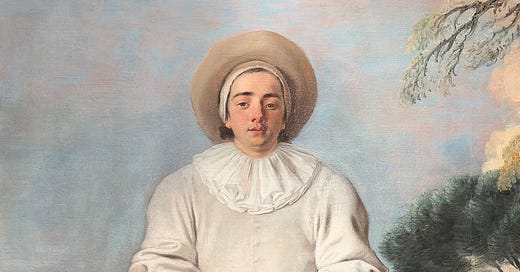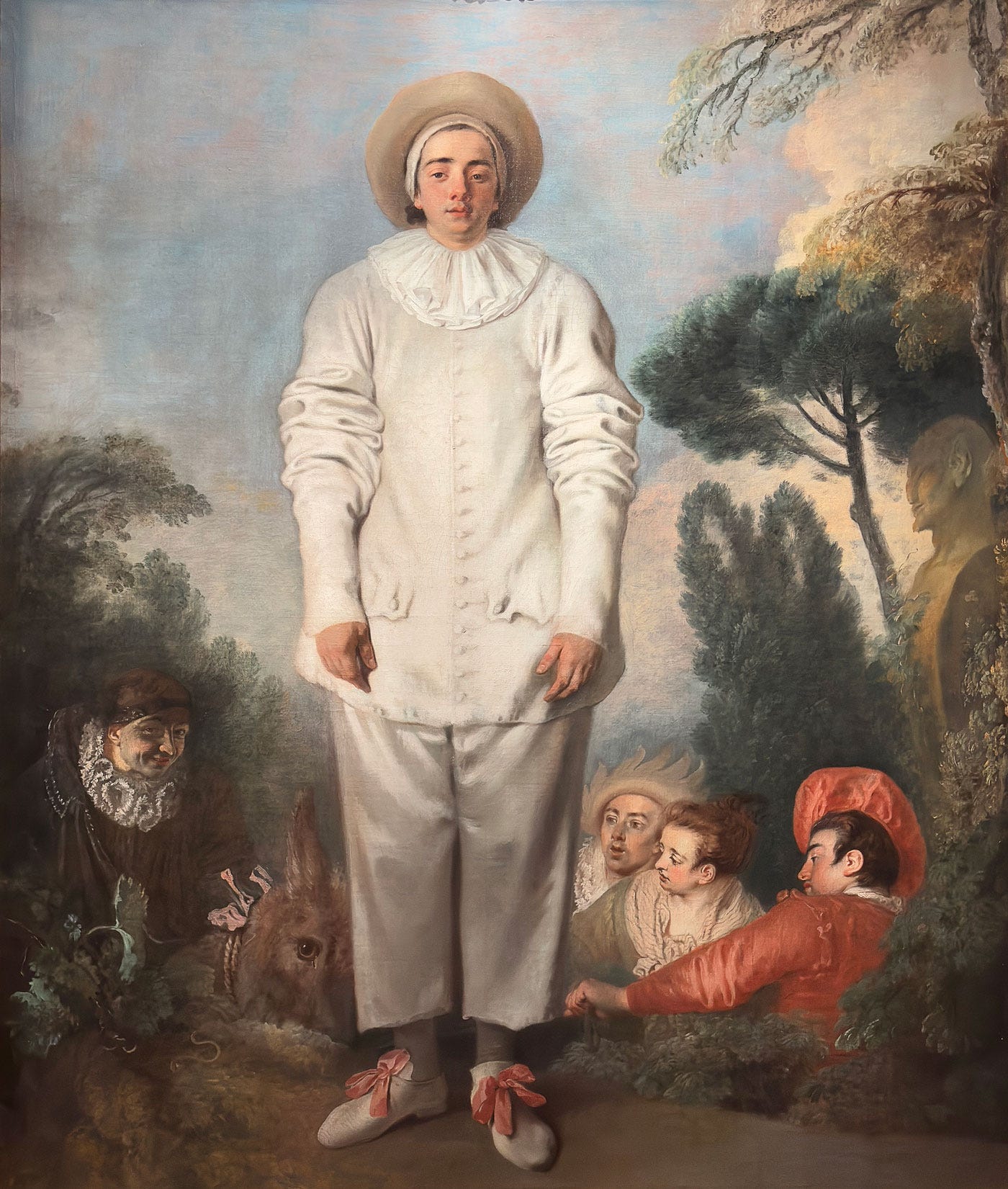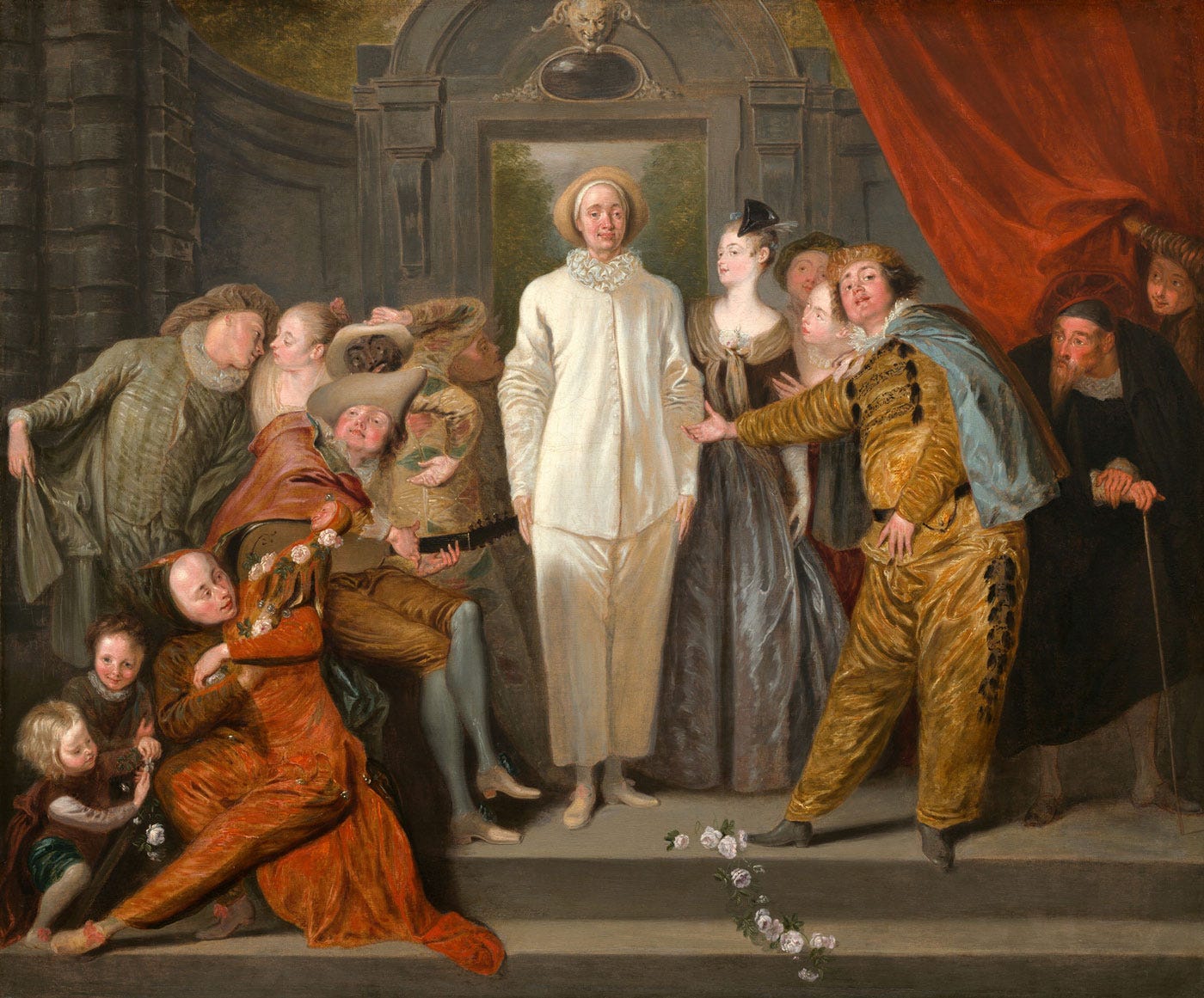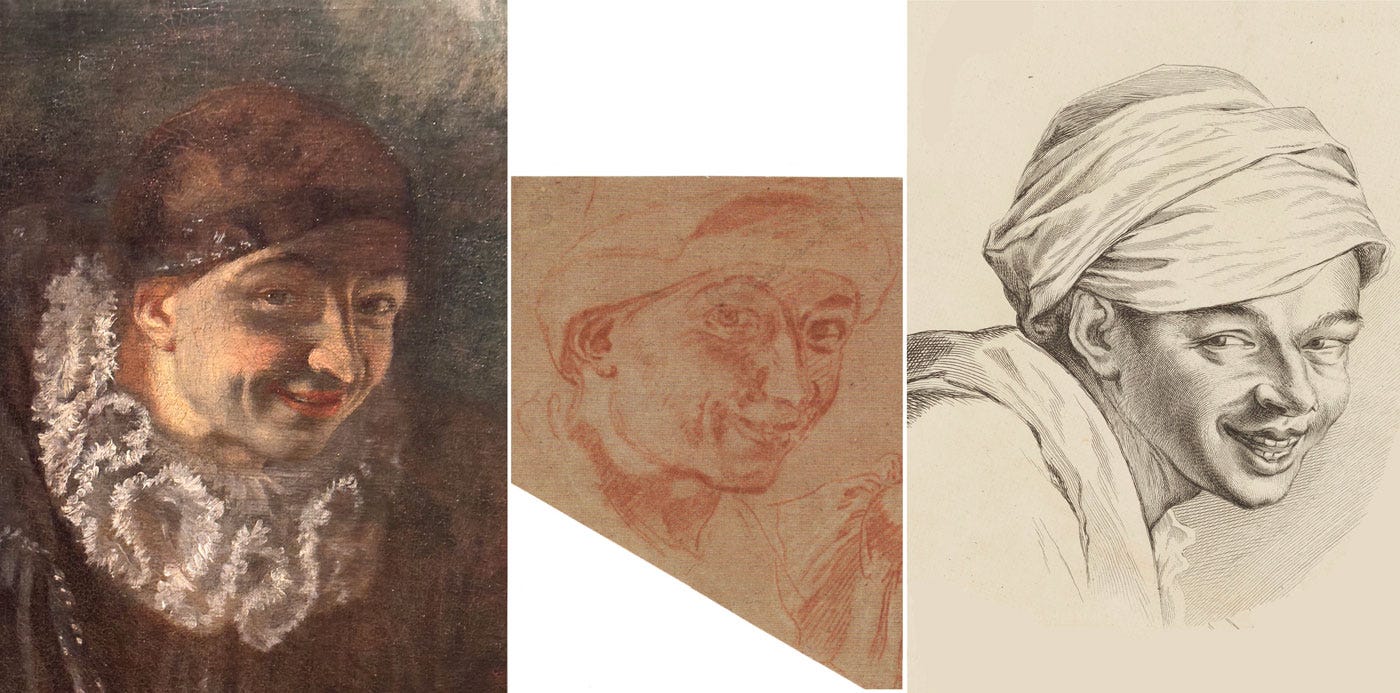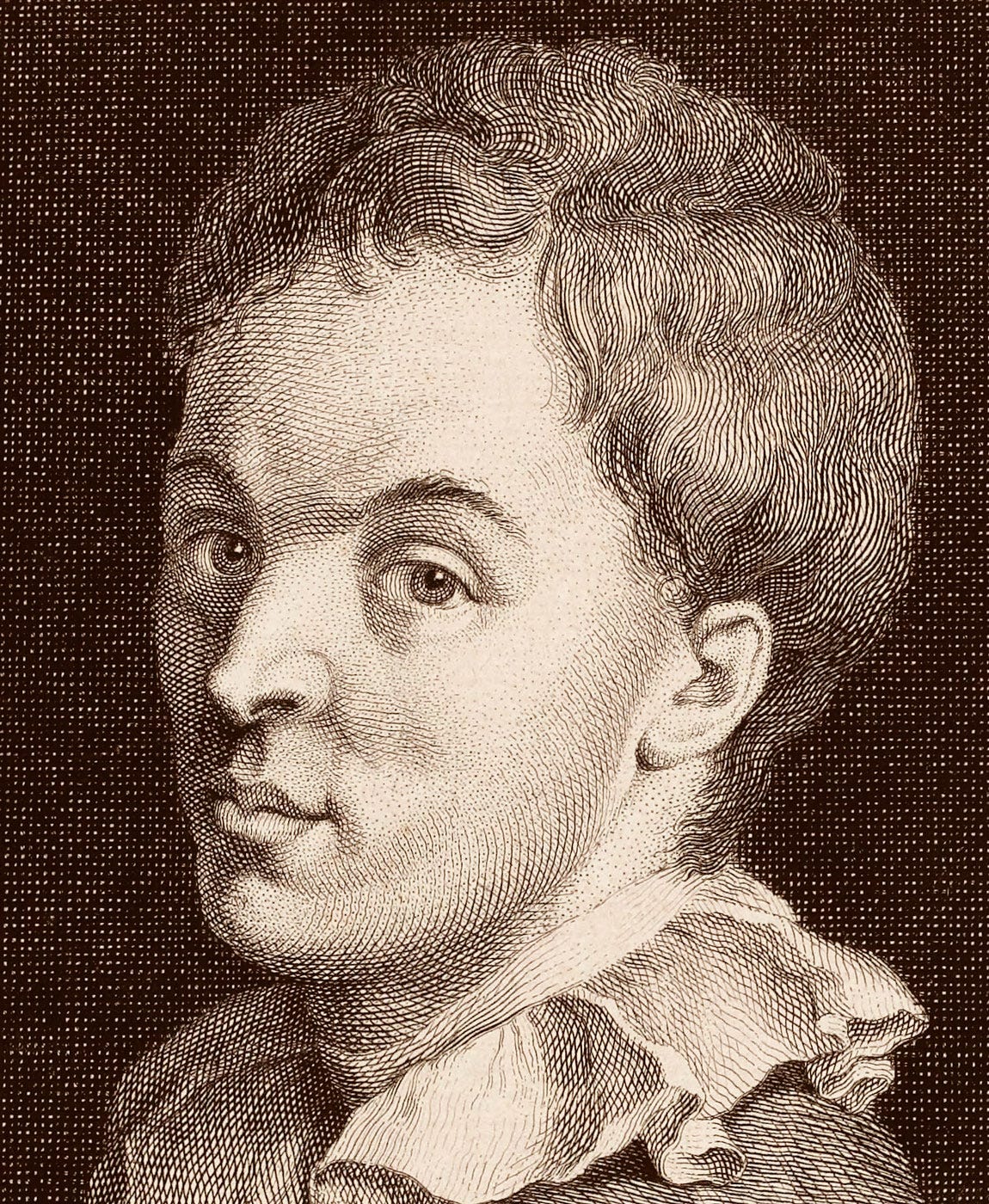(This is part 2 of yesterday’s art detective story).
This painting is big. The central figure is life-sized.
The scene is rather mysterious, and 100 years after it was painted, there is no trace of it. Of course, it is not signed.
There is a proximity between police and art history work, 'gut feeling' is not enough to nab your culprit—here, our genius. You need evidence.
Here it goes.
How can a big painting turn up out of nowhere?
The legend goes—maybe with a tinge of truth—that it was outside on the street, casually put there by a junk store seller.
Vivant Denon, the first director of the Louvre, walked past it and bought it for his private collection.
Science tells us it was bigger, up to one foot wider and taller.
At an unknown date, an imbecile used a pair of scissors and cut it off.
A detective should not put bets, but ten bucks that it was as simple as said idiot had a big frame but a larger painting, so he cut the canvas to fit the frame.
In any case, what is it even about?
What is it?
Let's read what the 1826 sales catalog states:
N° 187 — Antoine Watteau.
The most important, and most original painting produced by the brush of this excellent colorist.
We see several characters in carnival costumes; they are lifesize, which is very rare in Watteau's work.
An important detail for our detective: Watteau never signed his work.
But the catalog states without hesitation that it is a Watteau and describes the painting, calling the central figure Gilles.
Who is the central character, Gilles or Pierrot?
Watteau never represented indoor theatre, only outdoor theatre.
And the Comédie-Française (the French theatre) obtained, in 1719, that street theatre be forbidden.
Until then, small theatre companies played at fairs and in the street.
Pierrot, the most popular character in this form of slapstick theatre, is a clumsy and naive valet.
Gilles, similarly dressed, later replaced Pierrot.
However, since Gilles became famous after Watteau died, the mysterious figure is most likely Pierrot.
Pierrot is melancholic, but behind him is a man riding a donkey, Crispin, with a mocking smile looking at the viewer straight in the eye.
Crispin was the leading comic character of the Comédie-Française and usually did not share the stage with Pierrot.
Looking for Watteau
Let us first consider how rare smiling is in ancient art.
I should do an official count, but at a guess, only a dozen of the 35,000 artworks in the Louvre smile.
Above is a comparison of Crispin, Watteau's "head of a man" study, and an engraving copying a lost work, said to be a "portrait of Watteau drawn by himself while in bed."
We also have the engraving of a lost painting, another Watteau self-portrait.
It is very difficult not to see a similarity between these figures.
Maybe Crispin is Watteau laughing at the futility of Italian vs. French style theatre battles?
And its scale and style could be an advertisement for a fair theatre. Or maybe at the entrance of a café?
And that would be how Watteau signed the painting, putting himself laughing at us? The fact it is inscrutable is one of the reasons it is attractive.
Watteau or not Watteau?
Let's do the balance of evidence.
— against: it comes out of nowhere; it makes no sense that the only life-scale canvas by a famous painter went unnoticed for 100 years.
— in favor: Crispin is a potential Watteau self-portrait. The very first written reference to this painting not only states it is a Watteau, but it is also the most important one.
Furthermore, LOOK AT IT.
Apologies for the shouting, but I tried to explain that the Pilgrimage to the Isle of Cythera is pure, heart-stopping magic in real life.
Now, Pierrot. There is the scale and mysterious scene, the sheen and silky color.
The exchange between viewer and painting, as Pierrot, Crispin, and the donkey look at us. Again, pure, heart-stopping magic.
To conclude, art history is a little similar to a Pope's election. Cardinals receive divine inspiration; here is the new Pope; don't argue.
In our case, bring twenty art historians to that quiet Louvre room. Ask, with a hushed voice, "Is this a Watteau"?
If they all look puzzled that you even have to ask the question, it is not only a Watteau, but a major one.
Island of Cythera or Pierrot?
Now comes the tricky part: choosing for the "100 Masterpieces of the Louvre" guidebook.
We need to reduce the 35,000 artworks to a list of 100. Logically, rule #1 must be that there can be no more than one artwork per artist.
There are two magnificent Watteau paintings, the Island of Cythera and Pierrot, to put on the list.
It is like a child looking at vanilla and chocolate ice cream and being told he can only have one scoop.
If I hold my breath long enough, can I have both?
Notes
Musée du Louvre, Guillaume Faroult, Revoir Watteau. "Pierrot", dit le "Gilles", un comédien sans réplique.
Lettre de Fénelon à Louis XIV.
https://collections.louvre.fr/ark:/53355/cl010061995
https://collections.louvre.fr/ark:/53355/cl010059617
https://gallica.bnf.fr/ark:/12148/btv1b525229076
https://gallica.bnf.fr/ark:/12148/btv1b6951397w
https://artsandculture.google.com/entity/antoine-watteau/m01k7k8?hl=en
https://gallica.bnf.fr/ark:/12148/btv1b6951397w?rk=42918;4
https://gallica.bnf.fr/ark:/12148/btv1b8531161g.item
https://gallica.bnf.fr/ark:/12148/btv1b85311639


